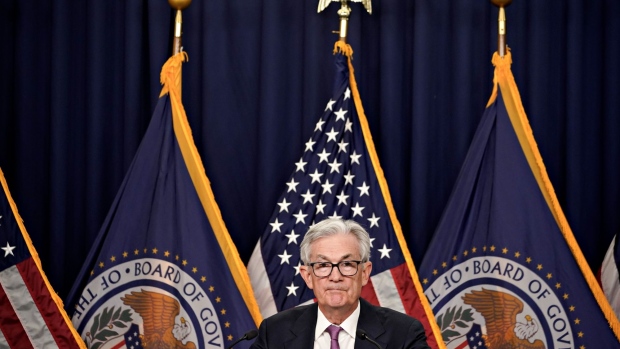Feb 22, 2023
Fed Worries Over Economic Risks From Prolonged Debt-Limit Talks
, Bloomberg News

(Bloomberg) -- Federal Reserve policymakers at their most recent gathering discussed concerns about the potential for prolonged partisan wrangling over raising the federal debt limit to disrupt the economy and financial markets.
“A number of participants stressed that a drawn-out period of negotiations to raise the federal debt limit could pose significant risks to the financial system and the broader economy,” minutes of the Jan. 31-Feb. 1 Federal Open Market Committee meeting showed on Wednesday.
Republicans and Democrats have staked out opposing positions on lifting the $31.4 trillion statutory debt ceiling, which was reached last month. The Treasury Department is currently applying special accounting measures to keep making payments on federal obligations, but that scope is expected to be exhausted within months.
Read More: US Federal Debt Limit Must Be Raised by Summer in BPC’s Model
Fed officials said that one of the downside risks to the economy was “disruptions in the financial system and broader economy associated with concerns that the statutory debt limit might not be raised in a timely manner,” the minutes showed.
Republicans, who have a narrow majority in the House, are demanding steep spending cuts in return for raising the debt limit. But President Joe Biden has called for a “clean” increase or suspension of the ceiling, as was done repeatedly in past years including multiple times for former GOP President Donald Trump.
Any steep spending cuts would also be unlikely to pass in the Senate, where Democrats have a majority. Negotiations haven’t yet been scheduled to craft some sort of compromise.
A similar partisan showdown in 2011 saw financial markets roiled, with equities sliding after S&P Global Ratings lowered the sovereign US credit rating from AAA for the first time.
Now, some Treasury market participants caution that worries over a payments default could see US government securities sell off, causing ripple effects in other markets, if the deadline to raising the debt limit is in view without a political compromise in sight.
‘Orderly Functioning’
The Treasuries market, the world’s biggest pool of government debt, has already seen issues with diminished liquidity in recent years. A meltdown in liquidity in the spring of 2020 forced the Fed into massive purchases of Treasuries.
“A number of participants noted the importance of orderly functioning of the market for US Treasury securities and stressed the importance of the appropriate authorities continuing to address issues related to the resilience of the market,” the Fed minutes showed Wednesday.
In the wake of the 2020 episode, the Fed set up permanent facilities that allow some domestic and foreign official institutions to swap Treasuries for dollar cash. The minutes of the latest Fed meeting suggested that not all policymakers are convinced at the power of those programs to avert problems, however.
“Although several participants noted that the Federal Reserve’s standing liquidity facilities could be helpful in addressing significant pressures in funding markets, should they arise, several participants also noted the challenges of addressing potential disruptions in US core market functioning,” the minutes said.
Following the meeting, Fed Chair Jerome Powell said at a press conference that “there’s only one way forward here, and that is for Congress to raise the debt ceiling so that the United States government can pay all of its obligations when due.” He also said that “no one should assume that the Fed can protect the economy from the consequences of failing to act in a timely manner.”
©2023 Bloomberg L.P.








